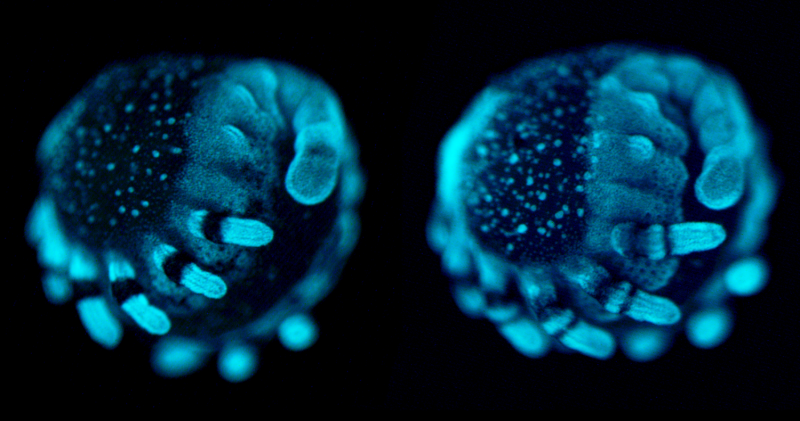Knee-deep in spider leg evolution

Authors Nikola-Michael Prpic et al., in a new study appearing in the advanced online edition of Molecular Biology and Evolution, have identified the driving force behind the evolution of a leg novelty first found in spiders: knees.
With eight hairy legs and seven joints on each—-that's a lot for a spider to coordinate just to take a single step. Prpic's research team honed in on a gene called dachshund (dac). The gene was first discovered in fruit flies, and humorously named for the missing leg segments and shortened legs that result from dac mutant flies.
But arachnids are different than flies and other arthropods, possessing a second dac gene. And the dac2 gene is made only in the kneecap, or patella, during spider development.
When the research group used RNA interference experiments to specifically deactivate dac2, the kneecap fuses to the tibia into a single leg segment. The force behind knees first appearing on the spider evolutionary scene was a result of ancient gene duplication in the original dac that, over time, evolved into an entirely new function and way of unique way of walking about for spiders.
"Species constantly adapt and evolve by inventing new body features," said Prpic. "Our work shows how a gene can be duplicated and then used during evolution to invent a new morphological feature."
Journal information: Molecular Biology and Evolution
Provided by Oxford University Press



















